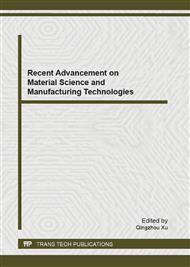p.443
p.448
p.452
p.456
p.461
p.466
p.471
p.475
p.479
Prediction Modeling of Hot Metal Silicon Content in Blast Furnace Based on PSO-LSSVM
Abstract:
The hot metal silicon content is important for the quality of the iron, but also as an indicator of the thermal state of the furnace. In order to stable operation of the blast furnace, a model is needed to predict hot metal silicon content more accurately. Towards this goal, a model based on least square support vector machine (LSSVM) is developed to model and predict hot metal silicon content, particle swarm optimization (PSO) is adopted to search the optimal set of the LSSVM model parameters. Prediction experiment is conducted based on the data obtained from a blast furnace past operation records in a steel tube plant and being preprocessed in several different ways. The experimental results show that the proposed methods yielded more accurate predictions than the neural network modeling methods.
Info:
Periodical:
Pages:
461-465
Citation:
Online since:
July 2013
Authors:
Price:
Сopyright:
© 2013 Trans Tech Publications Ltd. All Rights Reserved
Share:
Citation:


